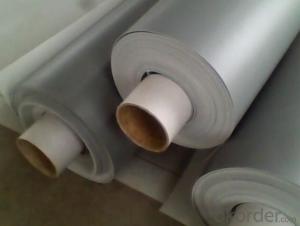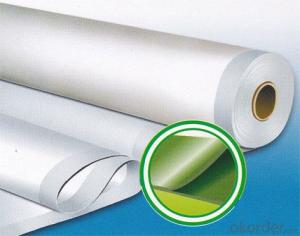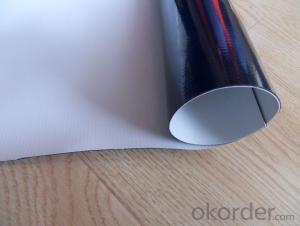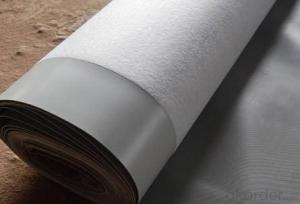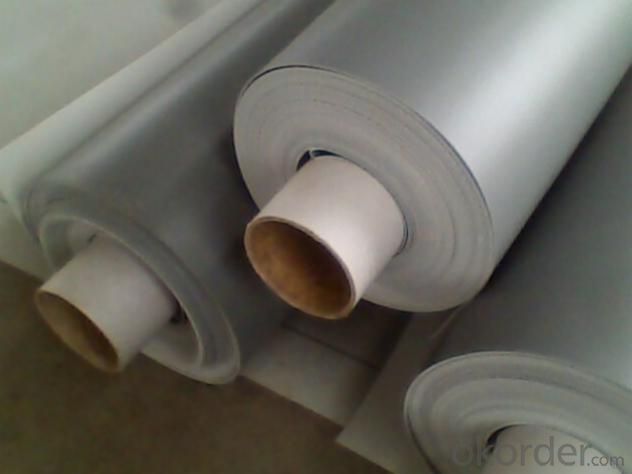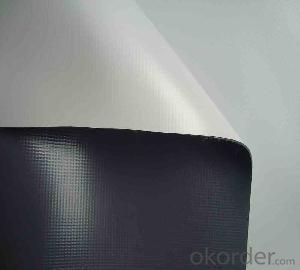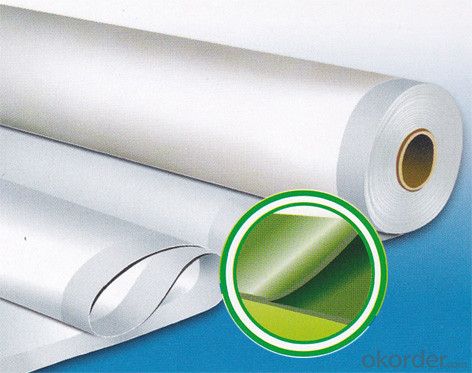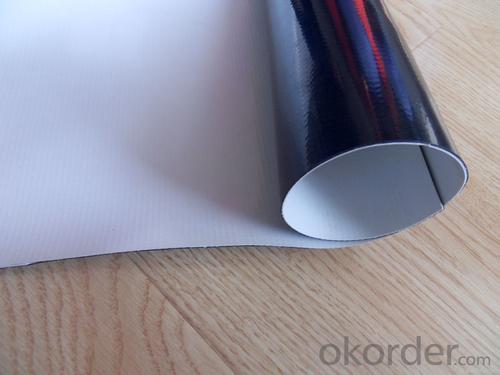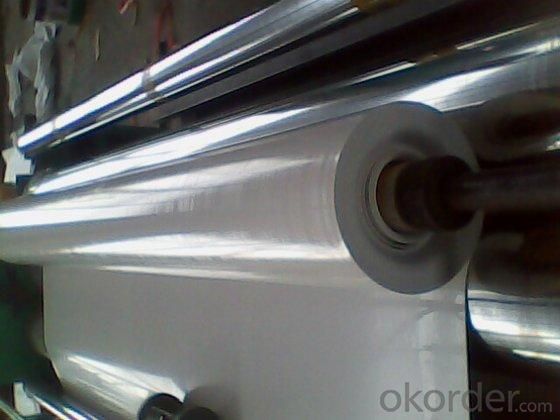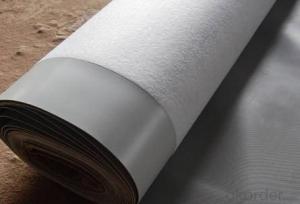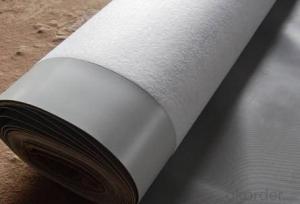PVC Waterproofing Sheet in Fleeced Back with Custom Thickness
- Loading Port:
- Shanghai
- Payment Terms:
- TT OR LC
- Min Order Qty:
- 20000 m²
- Supply Capability:
- 5000000 m²/month
OKorder Service Pledge
OKorder Financial Service
You Might Also Like
PVC Waterproofing Sheet in Fleeced Back with Custom Thickness
Product Description of PVC Waterproofing Sheet in Fleeced Back with Custom Thickness:
PVC Membrane Waterproof /Waterproofing membrane For Roof is a new polymer waterproof membrane. The PVC Membrane Waterproof /Waterproofing membrane For Roof raw material is polyvinyl chloride resin, mixed with plasticizer, filler, antioxygen, ultraviolet absorber and other auxiliaries.
Thickness: 1.2mm/1.5mm/1.8mm/2.0mm
Width:2050mm
Length:20m( Special specifications can be customized)
Size: 2.05mx20m
Color: white/grey, or any other colors.
Features of PVC Waterproofing Sheet in Fleeced Back with Custom Thickness:
1. Excellent anti-aging property.
2. Puncture- resistant.
3. Welding construction,
4. High tensile strength, good elongation, good dimensional stability.
5. Good plasticity.
6. It has self-extinguishing from fire property.
7. Materials surface is smooth, fast color, stain resistance.
8. More wide, Wastage become less when being used.
Classification of PVC Waterproofing Sheet in Fleeced Back with Custom Thickness:
1. N: Homogeneous PVC membrane
2. L: PVC membrane with fabric backing
3. W: Reinforced PVC membrane
Advantage of PVC Waterproofing Sheet in Fleeced Back with Custom Thickness:
1.) Mixing automation. Apply automatic temperature control automatic time control and automatic feed control.
2.) Extrusion equipment uses twin screw coextrusion. Screw temperature uses computer automatic temperature control system.
3.) Handpiece uses large width didhead extrusion equipment.
4.) Sophisticated three-roller calender equipment. The space between equiment is controlled by automation system.
Technical Data of PVC Waterproofing Sheet in Fleeced Back with Custom Thickness:
No. | Item | Model Ⅱ | |
1 | Tensile Strength Mpa ≥ | 12.0 | |
2 | Elongation at break% ≥ | 250 | |
3 | Shrinkage rate % ≤ | 2.0 | |
4 | Flexibility at low temperature | No crackle at -25oC | |
5 | Water tightness | Watertight | |
6 | Puncture resistance | Watertight | |
7 | Heat aging treatment | Appearance | Free from bubble, crack, cohesion and void |
Change rate of tensile strength % | +20oC | ||
Change rate of elongation at break | |||
Flexibility at low temperature | No crack at -20oC | ||
8 | Chemical corrosion resistance | Change rate of tensile strength % | +20 |
Change rate of elongation at break | |||
Flexibility at low temperature | No crack at -20oC | ||
9 | Artificial weathering | Change rate of tensile strength % | +20 |
Change rate of elongation at break | |||
Flexibility at low temperature | No crack at -20oC | ||
Application of PVC Waterproofing Sheet in Fleeced Back with Custom Thickness:
1) All kinds of roofs, such as steel structure roof, planted roof etc.
2) Underground engineering, such as building basement, subways, tunnels, air raid shelter, etc.
3) Other projects like artificial lake, dam, water reservoir, grain storehouse, etc.
Images of PVC Waterproofing Sheet in Fleeced Back with Custom Thickness:
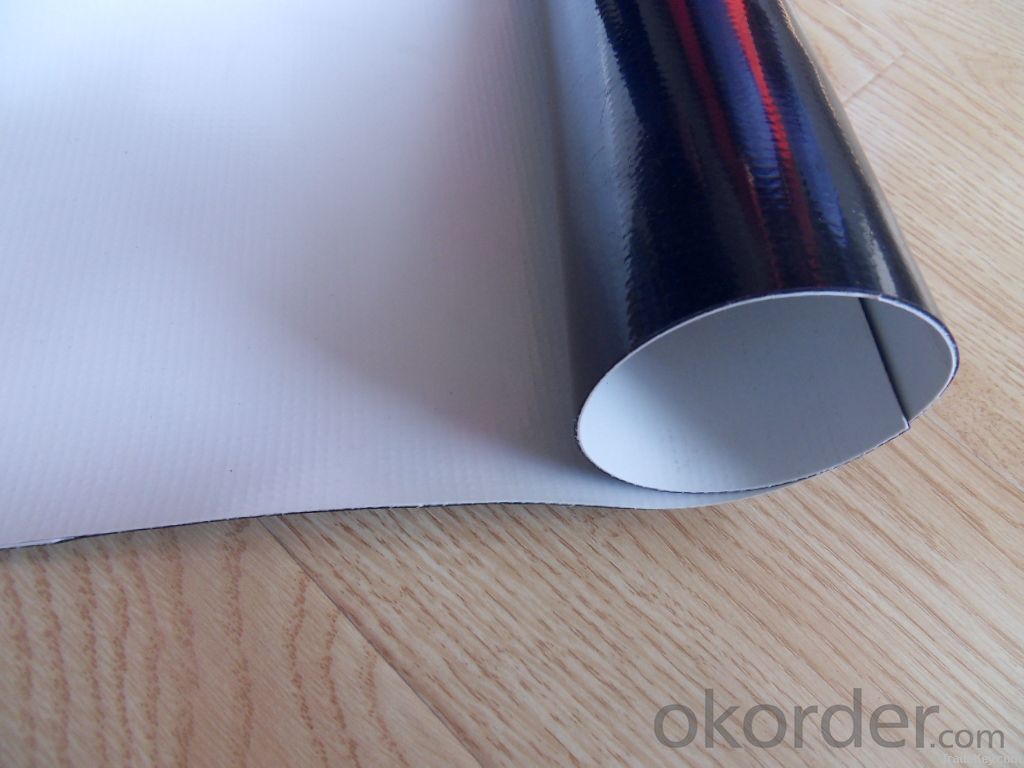
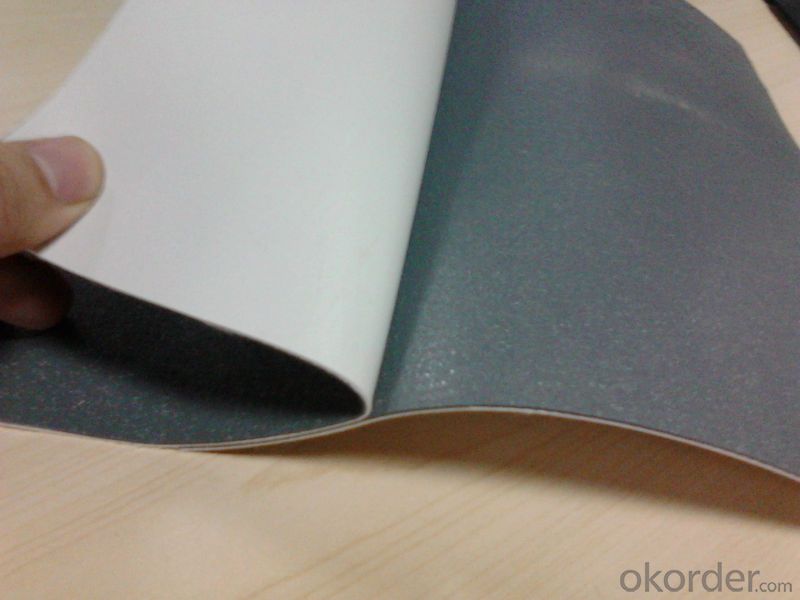
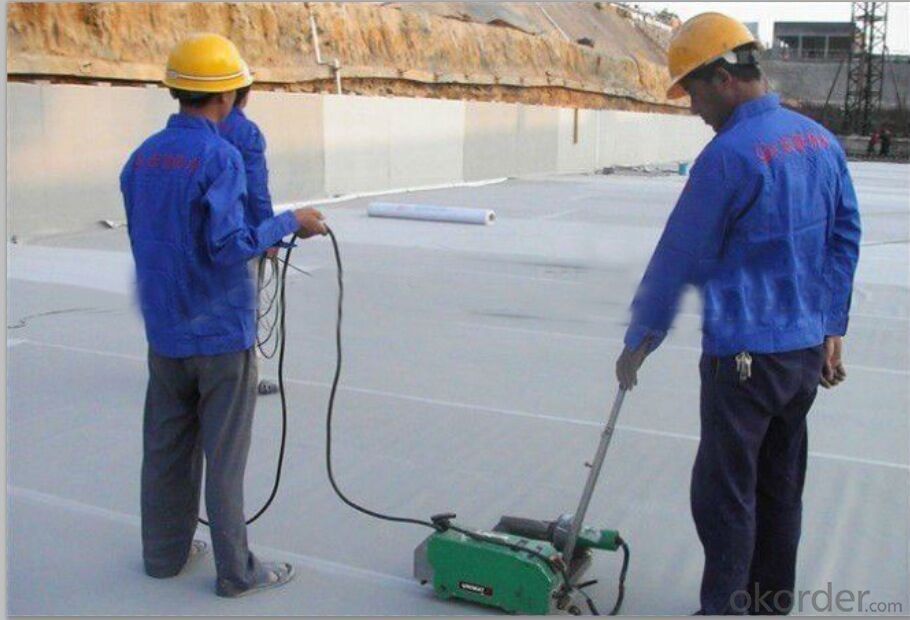
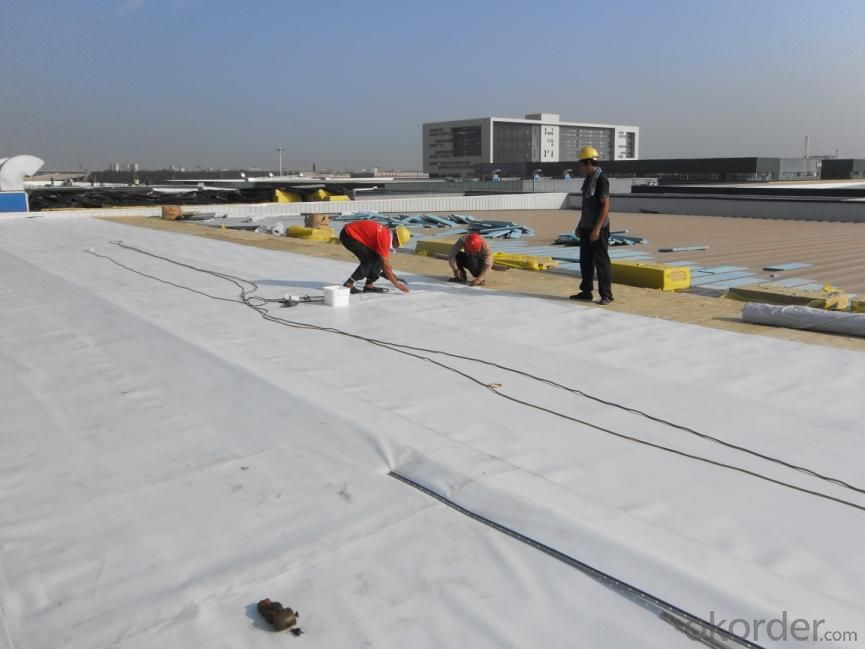
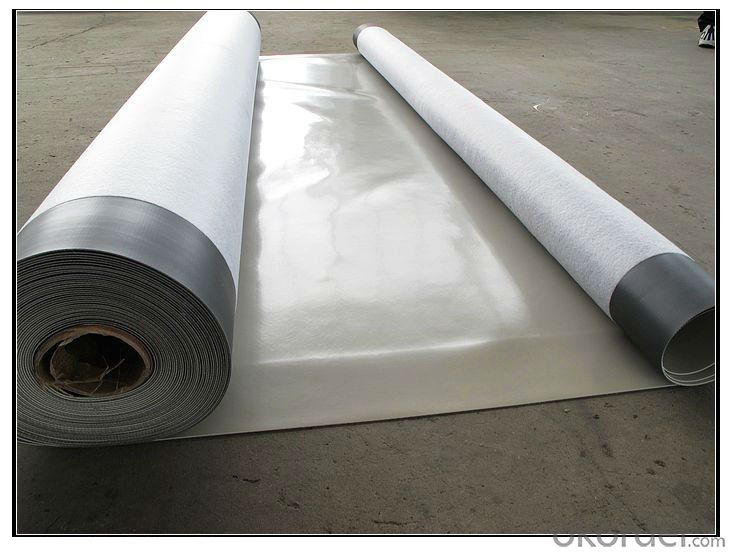
FAQ:
1. Can you produce 4m width?
Yes, no problem for us. We have four bases in China, largest one in this field.
2. How many quantity in one 20'' container for 1.2mm and 1.5mm?
480rolls, 11520m2 for 1.2mm and 400rolls, 9600m2 for 1.5mm
3. Can you provide free samples?
Yes, our samples are free, but express fees usually on buyer's account.
- Q: Can a waterproofing membrane be used in bathrooms?
- Yes, a waterproofing membrane can be used in bathrooms. In fact, it is highly recommended to use a waterproofing membrane in bathrooms to prevent water damage and leakage. The membrane acts as a barrier, preventing moisture from seeping into the walls or floors, ensuring the longevity and durability of the bathroom.
- Q: Can a waterproofing membrane be used on roofs or only on vertical surfaces?
- A waterproofing membrane can be used on both roofs and vertical surfaces. It is a versatile solution that can effectively protect a variety of structures from water damage, including roofs, walls, and foundations.
- Q: Can a waterproofing membrane protect against mold or mildew growth?
- Yes, a waterproofing membrane can help prevent mold or mildew growth by creating a barrier that keeps moisture out. By stopping water infiltration, it reduces the conditions necessary for mold and mildew to thrive, thus providing protection against their growth.
- Q: Can waterproofing membranes be used on utility vaults?
- Yes, waterproofing membranes can be used on utility vaults. They provide an effective barrier against water intrusion, protecting the vault and its contents from moisture damage. Waterproofing membranes help to maintain the structural integrity of the vault and ensure its long-term functionality.
- Q: Can a waterproofing membrane be used in conjunction with solar panel installations?
- Yes, a waterproofing membrane can be used in conjunction with solar panel installations. Waterproofing membranes are commonly used to protect roofs and other surfaces from water damage, and they can provide an additional layer of protection for solar panels. This can help to prevent water infiltration and potential damage to the solar panels and their electrical components. Additionally, waterproofing membranes can also help to extend the lifespan of the solar panel system by providing an extra barrier against moisture and other environmental factors.
- Q: Can a waterproofing membrane be used in areas with high water pressure?
- Indeed, areas with high water pressure can benefit from the use of a waterproofing membrane. These membranes are engineered to endure and repel water infiltration, rendering them suitable for locations with elevated water pressure. Typically composed of robust materials like rubber, PVC, or bitumen, these membranes possess exceptional durability and superior waterproofing properties. Furthermore, their strength and resistance to water pressure can be augmented by reinforcing them with additional layers or fabrics. However, to guarantee their effectiveness in high water pressure scenarios, it is crucial to properly install the waterproofing membrane and ensure it meets the area's specific requirements. Seeking professional advice and adhering to the manufacturer's guidelines are highly advised to ensure optimal performance in these conditions.
- Q: What is the warranty or guarantee for a waterproofing membrane?
- The warranty or guarantee for a waterproofing membrane typically varies depending on the manufacturer and product. It can range from a few years to a lifetime, generally covering any defects in materials or workmanship that may cause the membrane to fail. It is important to review the specific warranty terms and conditions provided by the manufacturer to understand the coverage and any limitations.
- Q: Can a waterproofing membrane be used in areas with heavy foot traffic or vehicle loadings?
- Yes, a waterproofing membrane can be used in areas with heavy foot traffic or vehicle loadings. However, it is important to choose a membrane that is specifically designed for such applications to ensure durability and longevity. These specialized membranes are typically thicker and more resistant to wear and tear. Additionally, consideration should be given to the type of traffic or loading that the area will experience. For example, areas with vehicular traffic may require a membrane with higher compressive strength to withstand the weight of vehicles. In summary, while waterproofing membranes can be used in high-traffic or heavy loading areas, it is crucial to select the appropriate type of membrane that meets the specific demands of the application.
- Q: Can a waterproofing membrane be used on precast brick surfaces?
- Yes, a waterproofing membrane can be used on precast brick surfaces. Precast brick surfaces are susceptible to water penetration, which can cause damage to the structure and lead to mold or mildew growth. Applying a waterproofing membrane can provide an effective barrier against water infiltration and protect the precast brick surface. The membrane is typically made of a flexible and durable material such as rubberized asphalt, modified bitumen, or polyurethane. It is applied to the surface using a brush or roller, and it creates a continuous and seamless layer that prevents water from seeping into the bricks. Additionally, the waterproofing membrane can also help to improve the overall thermal insulation of the precast brick surfaces and enhance their longevity. However, it is important to ensure that the precast bricks are clean, dry, and properly prepared before applying the membrane to ensure optimal adhesion and effectiveness.
- Q: Is a waterproofing membrane suitable for below-grade applications?
- A waterproofing membrane is a suitable choice for below-grade applications, where the areas are situated beneath ground level, like basements or foundations. These regions are susceptible to water infiltration and moisture problems, which can result in harm and structural issues. The purpose of a waterproofing membrane is to prevent water from entering and act as a barrier against moisture. It can be applied either on the exterior or interior surface of the below-grade structure, creating a continuous and long-lasting seal. This membrane effectively prevents water from seeping into the below-grade area, ensuring a dry and stable environment. It is crucial to utilize a waterproofing membrane in below-grade applications to safeguard the structure against water damage, the growth of mold, and other associated concerns.
Send your message to us
PVC Waterproofing Sheet in Fleeced Back with Custom Thickness
- Loading Port:
- Shanghai
- Payment Terms:
- TT OR LC
- Min Order Qty:
- 20000 m²
- Supply Capability:
- 5000000 m²/month
OKorder Service Pledge
OKorder Financial Service
Similar products
Hot products
Hot Searches
Related keywords
